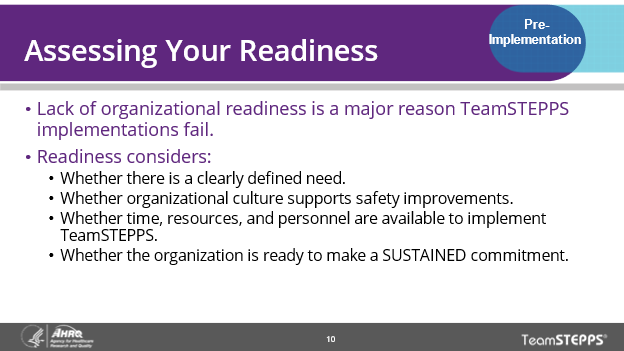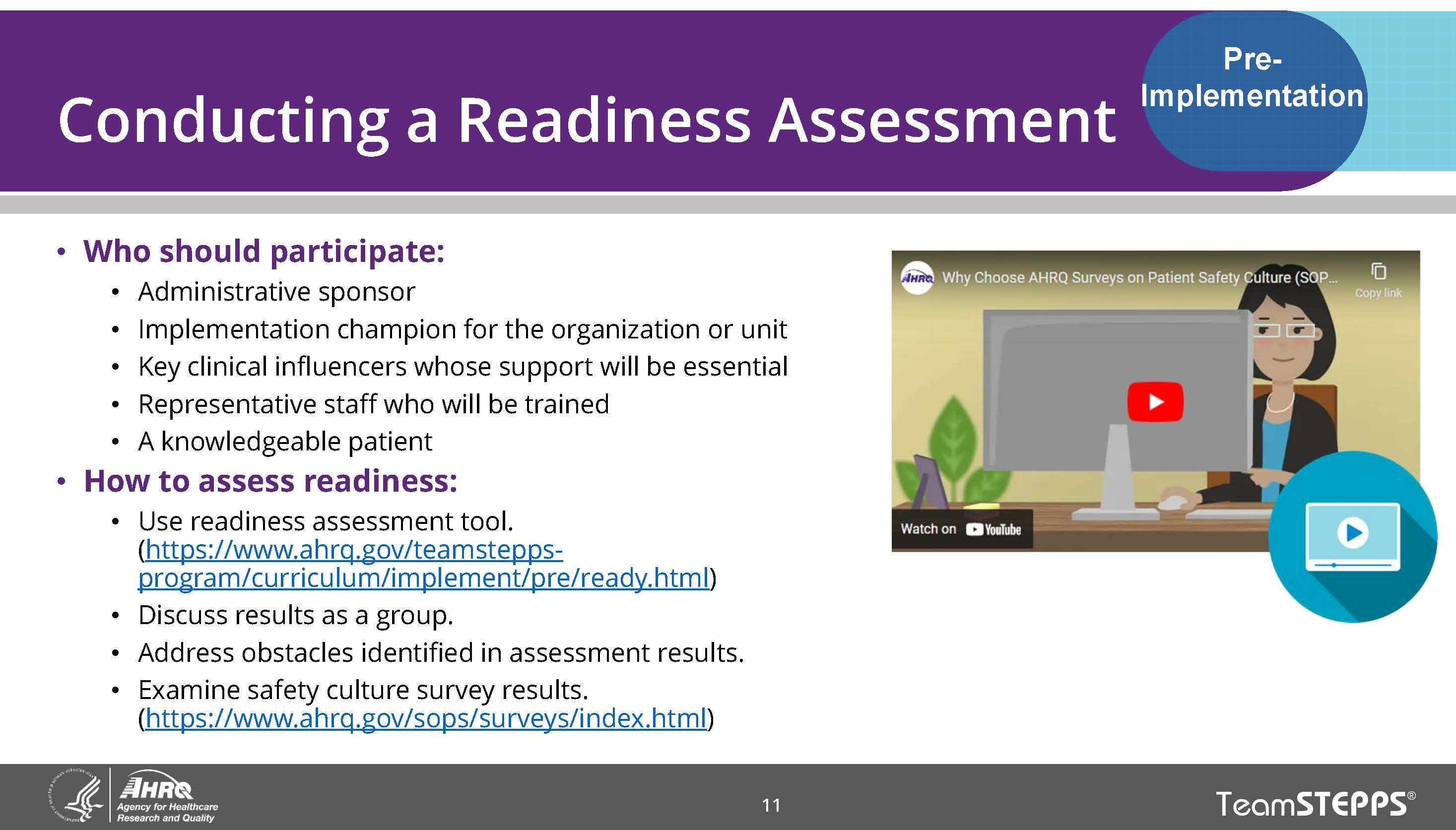Readiness Assessment
Investing in TeamSTEPPS typically requires one or more identifiable problems that are creating risks to patient safety, care quality, or operational efficiency that an organization or unit agrees they must resolve.
Are You Ready for TeamSTEPPS?
Determining whether your organization or unit is ready for a TeamSTEPPS implementation is vital because lack of readiness is a common reason implementations fail. Three general measure types that can be used for a pre-implementation assessment include:
- TeamSTEPPS Readiness Assessment. One way to evaluate readiness is to use the TeamSTEPPS Readiness Assessment (PDF, 134 KB). While a single person can answer the 13-question assessment, engaging a small group of key stakeholders, including frontline staff, unit leaders, and a patient representative, may be of greater benefit. Once each individual has completed the assessment, discuss differences in question responses with the group. An assessment involving key stakeholders may surface unexpected obstacles or it may lead to solutions that overcome reservations some stakeholders may have.
- Safety Culture Surveys. AHRQ has produced patient safety culture surveys for multiple healthcare settings designed to assess what healthcare workers and patients think of institutional or site safety. These surveys and the survey data AHRQ makes available can be used to assess perceptions of existing safety culture, identify specific culture strengths or weaknesses, and assess improvements from survey results at baseline before implementation activities begin.
- Available Process and Outcome Measures. Baseline data measures, many of which may already be part of the standard of care, can be used to see whether any tracked processes or outcomes require attention. If these problems are directly linked to teamwork and communication failures, they may help show the extent of the problems the TeamSTEPPS implementation will seek to overcome. These data can also help measure progress after implementation and ensure that improvements are sustained.
If You're Ready, Exactly What Problem Are You Trying To Fix?
TeamSTEPPS can be used to address an organization or unit culture that may pose risks for patients (e.g., expressed dissatisfaction with communication, reports of multiple near-misses, high turnover, staff burnout or stress). While formal measurement will be important to a successful implementation, taking time to elicit the views of staff and patients is also invaluable. Asking key stakeholders whether they perceive the issue as a problem, how large a problem they think it is, and what they think is causing it is an essential first step that is often overlooked. Failing to get input from patients and family caregivers is another common mistake it is important to avoid.

Present Slide 10, "Assessing Your Readiness"; note the importance of objectively assessing whether an organization is ready to implement TeamSTEPPS. Have people share times when their organizations attempted a change they weren't really prepared for.

Using Slide 11, "Conducting a Readiness Assessment," reinforce the message that:
- A readiness assessment should be a team activity because team buy-in will be key to implementation success.
- The readiness assessment tool is a helpful resource for this task.
- Culture surveys can inform a decision about whether an organization or unit is ready for TeamSTEPPS.
Note that readiness is often a matter of "more or less," and if an organization is unsure that they are ready, they can address areas of weakness before beginning to implement TeamSTEPPS. Alternatively, they may start the process incrementally in units or areas that seem most ready.



